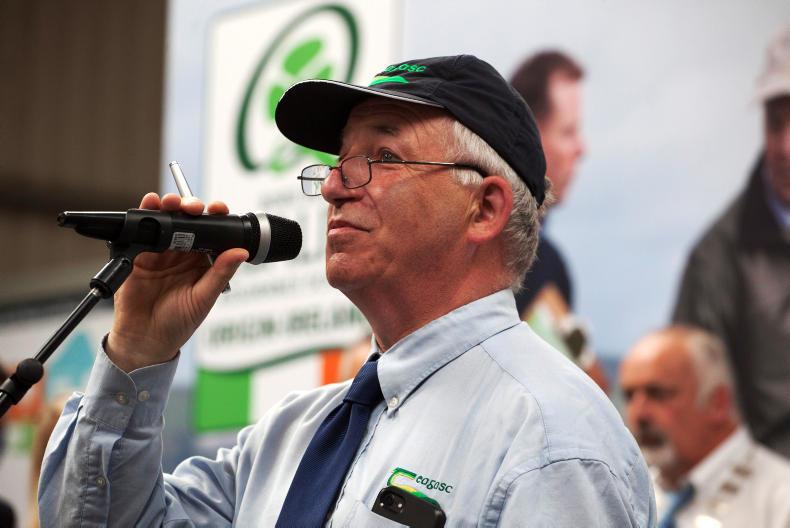Current dairy expansion under FoodWise 2025 and climate targets are incompatible, according to Teagasc director Prof Gerry Boyle.
“There’s a very clear incompatibility between growth in cow numbers and meeting those emission targets,” he told the Irish Farmers Journal at the Teagasc annual report launch last week. “We’re not going to hit our 2020 [emission] targets and I think that’ll probably focus the mind.”
Dairy cow numbers have increased by 19% to just over 1.4m between 2013 and 2017, although given the drop in suckler cows, overall cattle numbers are still below 1997 levels.
Agriculture emissions are set to increase by up to 4% by 2020 and up to 7% by 2030, according to the latest report from the Environmental Protection Agency (EPA).
Agriculture emissions are also one of the biggest overall contributors to Ireland’s emissions.
“If we go on to year after year to increasing our emissions it’s pretty obvious that policymakers are going to say this isn’t working,” Boyle said.
When asked if quotas were likely to be reintroduced, Boyle said that would be a matter for policymakers, but stated that the current policy to reduce absolute emissions was “pretty crude”.
Carbon tax
A Citizens’ Assembly voted earlier this year to impose a carbon tax on the agriculture sector.
However, the Department of Finance – which deals with all tax issues – informed the Irish Farmers Journal that while a carbon tax was being deliberated for other sectors, it was not being considered for agriculture.
The director of Teagasc also said that the tough weather conditions of 2018 could have a significant effect on expansion plans on some farms.
“Prior to this year we would have been saying that the projector of cow numbers would be more than we’d able to mitigate,” Boyle said.
Reassessment
“We’ll have to do a reassessment after this year because it’s been a huge shock to the system.”
Read more
Carbon tax not planned for agriculture
'Significant effort' required to reduce agricultural emissions – Teagasc
Current dairy expansion under FoodWise 2025 and climate targets are incompatible, according to Teagasc director Prof Gerry Boyle.
“There’s a very clear incompatibility between growth in cow numbers and meeting those emission targets,” he told the Irish Farmers Journal at the Teagasc annual report launch last week. “We’re not going to hit our 2020 [emission] targets and I think that’ll probably focus the mind.”
Dairy cow numbers have increased by 19% to just over 1.4m between 2013 and 2017, although given the drop in suckler cows, overall cattle numbers are still below 1997 levels.
Agriculture emissions are set to increase by up to 4% by 2020 and up to 7% by 2030, according to the latest report from the Environmental Protection Agency (EPA).
Agriculture emissions are also one of the biggest overall contributors to Ireland’s emissions.
“If we go on to year after year to increasing our emissions it’s pretty obvious that policymakers are going to say this isn’t working,” Boyle said.
When asked if quotas were likely to be reintroduced, Boyle said that would be a matter for policymakers, but stated that the current policy to reduce absolute emissions was “pretty crude”.
Carbon tax
A Citizens’ Assembly voted earlier this year to impose a carbon tax on the agriculture sector.
However, the Department of Finance – which deals with all tax issues – informed the Irish Farmers Journal that while a carbon tax was being deliberated for other sectors, it was not being considered for agriculture.
The director of Teagasc also said that the tough weather conditions of 2018 could have a significant effect on expansion plans on some farms.
“Prior to this year we would have been saying that the projector of cow numbers would be more than we’d able to mitigate,” Boyle said.
Reassessment
“We’ll have to do a reassessment after this year because it’s been a huge shock to the system.”
Read more
Carbon tax not planned for agriculture
'Significant effort' required to reduce agricultural emissions – Teagasc






 This is a subscriber-only article
This is a subscriber-only article










SHARING OPTIONS: